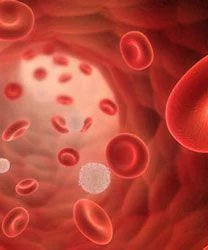- Advertise
- About OncLive
- Editorial Board
- MJH Life Sciences brands
- Contact Us
- Privacy
- Terms & Conditions
- Do Not Sell My Information
2 Clarke Drive
Suite 100
Cranbury, NJ 08512
© 2025 MJH Life Sciences™ and OncLive - Clinical Oncology News, Cancer Expert Insights. All rights reserved.
EU Approval Sought for Subcutaneous Daratumumab in Light-Chain Amyloidosis
A Type II variation application has been submitted by Janssen Pharmaceutica NV to the European Medicines Agency for the subcutaneous formulation of daratumumab in combination with bortezomib, cyclophosphamide, and dexamethasone for use in adult patients with light-chain amyloidosis.

A Type II variation application has been submitted by Janssen Pharmaceutica NV to the European Medicines Agency for the subcutaneous formulation of daratumumab (Darzalex plus hyaluronidase-fihj) in combination with bortezomib, cyclophosphamide, and dexamethasone (CyBorD) for use in adult patients with light-chain (AL) amyloidosis.1
The application was based on data from the phase 3 ANDROMEDA (NCT03201965) trial, which showed that the addition of subcutaneous daratumumab to CyBorD was superior to CyBorD alone in that it resulted in more rapid hematologic responses and better clinical outcomes with a favorable toxicity profile.2
Moreover, subcutaneous daratumumab plus CyBorD was also found to result in an improvement in major deterioration progression-free survival (MOD-PFS) and significantly higher organ responses in patients with newly diagnosed disease.
“We are extremely pleased about the submission for subcutaneous [daratumumab] in patients with AL amyloidosis to the European Health Authorities based on the phase 3 ANDROMEDA (AM3001) study,” Jan van de Winkel, PhD, chief executive officer of Genmab, stated in a press release. “We are hopeful that this will lead to the first approved treatment option for patients with this devastating disease which would also be the first approved indication for [daratumumab] in Europe outside of multiple myeloma.”
In the randomized, open-label, active-controlled, phase 3 trial, investigators set out to evaluate the safety and efficacy of subcutaneous daratumumab plus versus CyBorD alone in patients with newly diagnosed AL amyloidosis. The primary end point of the trial was overall hematologic complete response (CR) rate in the intent-to-treat patient population, while key secondary end points included MOD-PFS, organ response rate, time to hematologic response, survival, and safety.
Results presented during the 2020 European Hematology Association Annual Congress showed that subcutaneous daratumumab plus CyBorD elicited a hematologic CR rate of 53% versus 18% with CyBorD alone (odds ratio, 5.1; 95% CI, 3.2-8.2; P <.0001). Moreover, the addition of subcutaneous daratumumab to CyBorD led to about a doubling in the 6-month organ response rate reported versus CyBorD alone in terms of cadiac (42% vs 22%, respectively) and renal (52% vs 27%) responses.
A higher rate of overall hematologic response was also observed in the investigational arm versus the control arm, at 92% versus 77%, respectively, along with a higher rate of very good partial response or better (≥VGPR), at 79% versus 49%, respectively. Of those who responded, the median time to ≥VGPR/CR was 17/60 days versus 25/85 days in the investigational and control arms, respectively. MOD-PFS was also found to favor subcutaneous daratumumab/ CyBorD (HR, 0.58; 95% CI, 0.37-0.93; P =.0230).
In the trial, 388 participants were randomized to the daratumumab arm (n = 195) or the CyBorD-alone arm (N = 193). All patients were given cyclophosphamide at a weekly dose of 300 mg/m2 either orally or intravenously (IV), subcutaneous bortezomib at a weekly dose of 1.3 mg/m2, and 20 to 40 mg of oral or IV dexamethasone for six 28-day treatment cycles. Patients received subcutaneous daratumumab via injection on a weekly basis for cycles 1 to 2, twice weekly in cycles 3 through 6, and every 4 weeks thereafter for up to 24 cycles.
With regard to safety, the rate of discontinuation because of treatment-emergent toxicities was 4% in both treatment arms. Fifty-six deaths were reported in the trial; 29 occurred on the investigational arm, while 27 occurred on the control arm. The most frequently reported grade 3 or 4 treatment-emergent adverse effects included lymphopenia (13%, daratumumab/CyBorD vs 10%, CyBorD), pneumonia (8% vs 4%, respectively), diarrhea (6% vs 4%), cardiac failure (6% vs 5%), neutropenia (5% vs 3%), syncope (5% vs 6%), and peripheral edema (3% vs 6%).
Additionally, 14 patients on the investigational arm had systemic administration-related reactions, but all were grade 1 or 2 in severity and the majority of these effects happened during the first infusion.
In September 2020, the FDA submitted a supplemental biologics license application for daratumumab plus hyaluronidase-fihj (Darzalex Faspro) for the treatment of patients with AL amyloidosis based on data from ANDROMEDA.
Previously, in May 2020, subcutaneous daratumumab plus hyaluronidase-fihj was FDA approved for use in adult patients with newly diagnosed or relapsed/refractory multiple myeloma based on data from the COLUMBA (MMY3012) trial, which demonstrated noninferiority in terms of efficacy versus the intravenous formulation of the CD38-targeted monoclonal antibody.3
References
- Genmab announces that Janssen has submitted a Type II Variation application to the European Medicines Agency for use of subcutaneous Darzalex (daratumumab) in patients with light-chain (AL) amyloidosis. News release. Genmab. November 5, 2020. Accessed November 5, 2020. https://bit.ly/3kaH2E9.
- Kastritis E, Palladini G, Minnema MC, et al. Subcutaneous daratumumab + cyclophosphamide, bortezomib, and dexamethasone (CyBorD) in patients with newly diagnosed light chain (AL) amyloidosis: primary results from the phase 3 ANDROMEDA study Presented at: the 25th Annual European Hematology Congress: Virtual. June 1121, 2020. Abstract #LB2604.
- FDA approves daratumumab and hyaluronidase-fihj for multiple myeloma. News release. FDA. May 1, 2020. Accessed November 5, 2020. https://bit.ly/2zJvs0Y.
Related Content:




